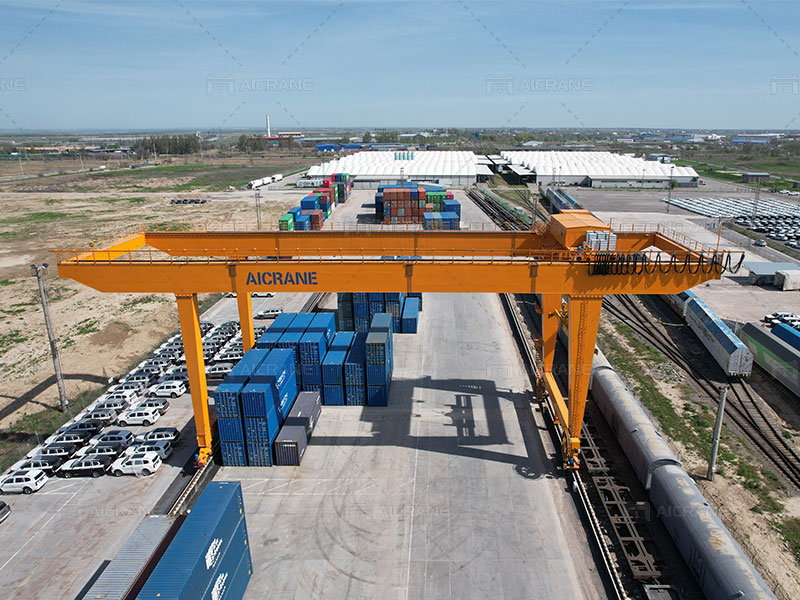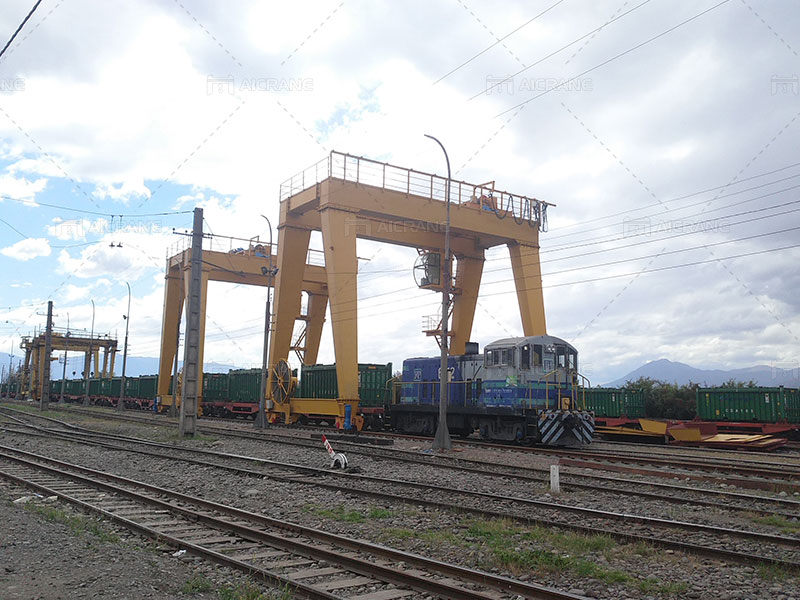Logistics is the backbone of modern supply chains, ensuring that goods are transported efficiently and effectively from point A to point B. One of the key tools that can significantly enhance productivity in logistics operations is the gantry crane. These versatile machines are widely used for lifting, moving, and positioning heavy loads across various sectors, including shipping yards, warehouses, construction sites, and industrial facilities. This article delves into the various ways gantry cranes can enhance productivity in logistics and offers insights into selecting the right type of crane for your specific needs.

Understanding Gantry Cranes in Logistics
A gantry crane is a type of crane that is supported by a bridge-like structure (gantry) that can span horizontally over a designated work area. Unlike overhead cranes that are typically fixed in place, gantry cranes can be mobile or semi-mobile, offering flexibility in movement. They are widely used in logistics for handling containers, bulk materials, pallets, and other heavy or cumbersome items that need to be moved quickly and safely.
There are several types of gantry cranes, including rail-mounted gantry (RMG) cranes, rubber-tired gantry (RTG) cranes, full gantry cranes, semi-gantry cranes, portable gantry cranes, and workshop gantry cranes. Each type serves a unique purpose and can be customized to meet specific requirements.

Key Benefits of Using Gantry Cranes in Logistics
- Increased Efficiency in Material Handling: Gantry cranes are designed to handle heavy and bulky loads with precision. By using gantry cranes in logistics, businesses can significantly increase the speed of material handling, reducing the time required to load, unload, and transport goods. This efficient handling translates into quicker turnaround times, allowing logistics operations to run smoothly and more effectively.
- Flexibility and Versatility: Gantry cranes can be easily adapted to different environments and tasks. For instance, rubber-tired gantry cranes (RTGs) can move freely within a yard or terminal, making them ideal for port and intermodal facilities where containers are frequently relocated. On the other hand, rail-mounted gantry cranes (RMGs) provide stability and high lifting capacity, perfect for high-density container stacking and bulk cargo handling. Learn more about lifting solutions for logistics and transportation: https://aicraneliftingsolution.com/industries/logistics-port-transportation/
- Space Optimization: The ability of gantry cranes to move materials in three dimensions—up/down, side-to-side, and back-and-forth—enables better space utilization in warehouses and container yards. For logistics facilities where space is at a premium, such as urban warehouses or congested ports, this feature allows for more efficient storage and retrieval, thereby enhancing throughput.
- Cost Reduction: Investing in gantry cranes can lead to significant cost savings in the long run. These cranes minimize labor costs by reducing the number of workers needed for manual handling tasks. They also reduce the likelihood of damage to goods due to mishandling, further lowering operational costs related to product damage and insurance claims.
- Enhanced Safety: Gantry cranes are equipped with advanced safety features such as anti-sway technology, overload protection, and emergency stop mechanisms. These features help prevent accidents, ensuring the safety of both personnel and goods. By reducing the risk of workplace accidents and injuries, logistics companies can avoid downtime and maintain a high level of productivity.
Practical Steps to Enhance Productivity with Gantry Cranes
- Choosing the Right Type of Gantry Crane: Selecting the appropriate type of gantry crane is crucial for optimizing logistics operations. Factors to consider include the weight of loads to be handled, the required span, lifting height, duty cycle, and mobility. For instance, rubber-tired gantry cranes are ideal for port operations where mobility and flexibility are essential, while rail-mounted gantry cranes are suited for rail yards and container terminals that require high lifting capacities and precision.
- Implementing Automation and Remote Control: Modern gantry cranes come with automation and remote-control options that can significantly enhance productivity. Automated systems can streamline operations by reducing human error, optimizing crane movements, and improving cycle times. Remote control allows operators to control cranes from a safe distance, reducing the need for manual intervention and enhancing safety.
- Regular Maintenance and Upgrades: Regular maintenance is essential to keep gantry cranes in optimal working condition. A well-maintained crane is less likely to experience downtime due to mechanical failures or breakdowns. Upgrading older gantry cranes with modern components, such as anti-sway systems, variable frequency drives, and improved control systems, can further enhance productivity and efficiency.
- Training and Skill Development: Operator training is a critical factor in maximizing the productivity of gantry cranes. Well-trained operators are more efficient and can better utilize crane capabilities to perform tasks quickly and safely. Investing in training programs and continuous skill development ensures that operators are updated on the latest technologies and best practices.
- Implementing Smart Fleet Management: For logistics companies that operate multiple Aicrane gantry cranes, implementing a smart fleet management system can optimize crane allocation and usage. Such systems provide real-time data on crane operations, enabling better decision-making regarding crane movements, maintenance schedules, and energy consumption. This level of control can help in identifying bottlenecks and improving overall operational efficiency.
- Optimizing Layout and Workflow: The layout of a logistics facility plays a vital role in enhancing productivity. Proper planning and organization of the work area, including the positioning of gantry cranes, can minimize the distance and time required for material handling. An optimized workflow that minimizes unnecessary movements can lead to quicker loading and unloading processes, contributing to higher productivity levels.
- Incorporating IoT and Data Analytics: Integrating IoT (Internet of Things) technology and data analytics into gantry crane operations can provide valuable insights into performance and utilization. By monitoring parameters such as load weight, cycle time, and energy consumption, logistics managers can identify areas for improvement and implement strategies to optimize crane efficiency.
Conclusion
Gantry cranes are indispensable tools in the logistics industry, providing a multitude of benefits ranging from enhanced efficiency and flexibility to cost reduction and improved safety. By choosing the right type of crane, incorporating automation, maintaining equipment, and investing in operator training, logistics companies can significantly enhance productivity and gain a competitive edge in the market. With continuous advancements in crane technology and smart management practices, the potential for further productivity gains is immense.
In the fast-paced world of logistics, staying ahead requires not just the right equipment but also the strategic use of that equipment to optimize operations. Gantry cranes, with their versatility and adaptability, offer a powerful solution for meeting the evolving demands of modern logistics.